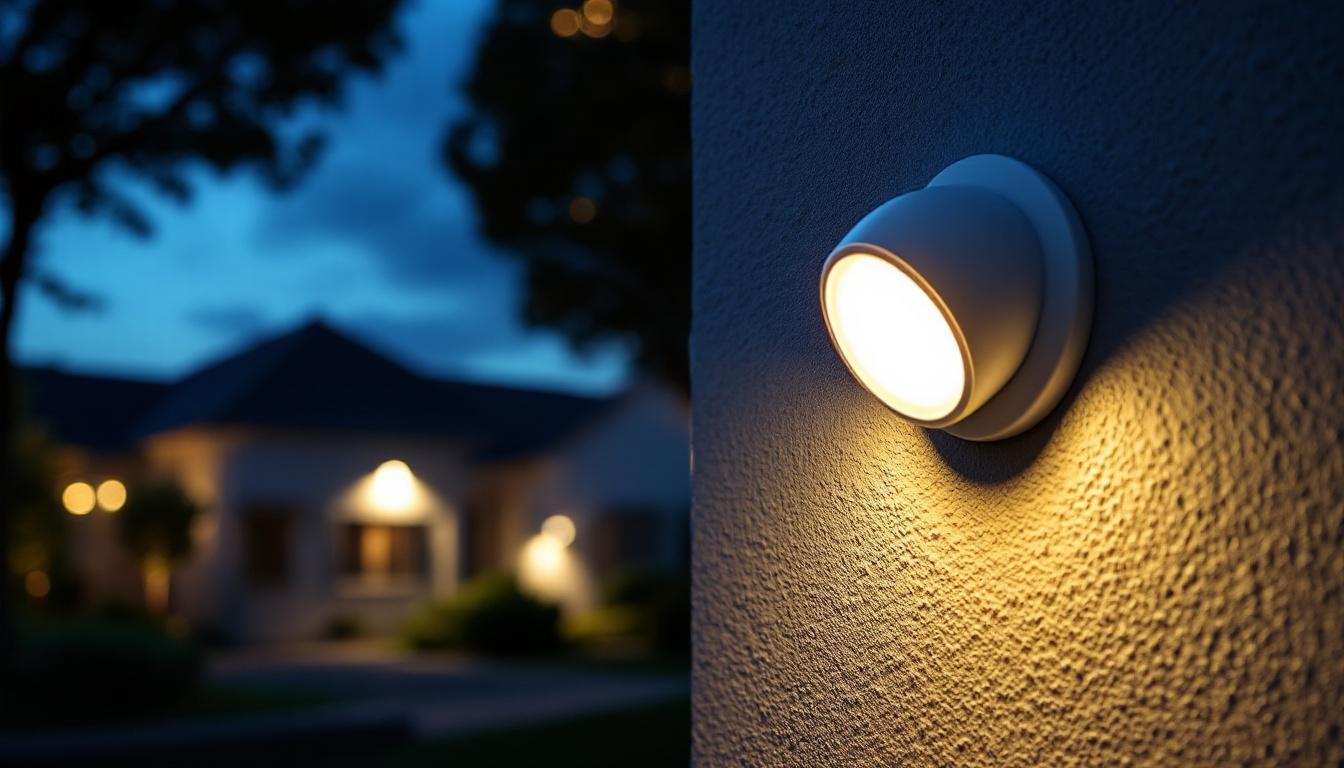
In the realm of lighting design and installation, security light sensors often remain an overlooked component. While many contractors focus on aesthetics and functionality, the integration of security light sensors can significantly enhance the effectiveness and safety of lighting projects. This article delves into the importance of security light sensors, their benefits, and how they can transform lighting systems into comprehensive solutions.
Security light sensors are devices designed to detect motion and ambient light levels, automatically activating outdoor lighting when needed. These sensors play a crucial role in enhancing security, deterring potential intruders, and providing safety for homeowners and businesses alike.
There are several types of security light sensors available on the market, each with its unique features and applications. The most common types include:
Security light sensors operate using various technologies to detect movement and light levels. When a sensor is activated, it sends a signal to the lighting system to turn on, illuminating the area. Most sensors can be adjusted for sensitivity and duration, allowing contractors to customize the settings based on the specific needs of the project.
Additionally, many modern sensors are equipped with features such as timers and dimming capabilities, enabling them to conserve energy while still providing adequate illumination when necessary.
Integrating security light sensors into lighting projects offers numerous advantages that can enhance both security and energy efficiency. Understanding these benefits can help contractors make informed decisions when designing lighting systems.
One of the primary benefits of security light sensors is their ability to deter crime. Well-lit areas are less attractive to potential intruders, as they increase the likelihood of being seen. By strategically placing security lights equipped with sensors around a property, contractors can create a safer environment for clients.
Moreover, the sudden illumination triggered by motion can startle intruders, potentially causing them to flee. This proactive approach to security can significantly reduce the risk of break-ins and vandalism.
Security light sensors contribute to energy savings by ensuring that lights are only activated when necessary. Traditional outdoor lighting systems may remain on throughout the night, leading to wasted energy and higher utility bills. In contrast, sensor-activated lights will only illuminate when motion is detected, reducing overall energy consumption.
Many modern sensors also feature adjustable settings, allowing contractors to fine-tune the sensitivity and duration of the lights. This customization ensures that lights remain off during periods of inactivity, further enhancing energy efficiency.
In addition to security and energy efficiency, security light sensors offer convenience and safety for homeowners and businesses. For instance, when returning home after dark, individuals can benefit from lights automatically turning on, illuminating pathways and entrances. This feature not only enhances safety but also provides peace of mind.
Furthermore, security light sensors can be integrated with smart home systems, allowing for remote control and monitoring. This integration enables users to customize their lighting preferences and receive alerts when motion is detected, enhancing overall security and convenience.
When selecting security light sensors for a project, several factors should be considered to ensure optimal performance and effectiveness. Understanding the specific needs of the project and the environment is crucial in making the right choice.
The environment in which the sensors will be installed plays a significant role in their effectiveness. Factors such as weather conditions, landscaping, and building layout can impact sensor performance. For example, sensors installed in areas with heavy foliage may require more sensitivity to detect movement effectively.
Additionally, contractors should consider the potential for false alarms. Environments with frequent animal activity may necessitate the use of dual technology sensors to minimize unnecessary triggers. Assessing the specific environment will help contractors choose the most suitable sensors for each project.
Proper installation and placement of security light sensors are critical for maximizing their effectiveness. Sensors should be positioned to cover the most vulnerable areas of a property, such as entry points and driveways. Height and angle are also important considerations, as sensors should have an unobstructed view of the area they are monitoring.
Contractors should also take into account the sensor’s detection range and adjust settings accordingly. Testing the sensors after installation can help ensure they are functioning as intended and provide the desired level of security.
For projects involving retrofitting or upgrading existing lighting systems, compatibility is a key consideration. Contractors should ensure that the selected security light sensors can seamlessly integrate with current lighting fixtures and control systems.
Many modern sensors are designed to work with various types of lighting, including LED, incandescent, and fluorescent bulbs. Additionally, contractors should verify that the sensors can be easily programmed and adjusted to meet the specific needs of the project.
Despite their numerous benefits, several misconceptions about security light sensors persist. Addressing these misunderstandings can help contractors and clients make informed decisions regarding their lighting projects.
One common misconception is that security light sensors are overly sensitive and will trigger unnecessarily. While some older models may have had issues with false alarms, modern sensors come equipped with adjustable sensitivity settings. This feature allows contractors to customize the sensor’s response based on the specific environment, significantly reducing the likelihood of false triggers.
Another misconception is that security light sensors are limited to outdoor applications. While they are indeed popular for exterior lighting, many sensors can also be used indoors. For example, they can be integrated into indoor security lighting systems to enhance safety in hallways, staircases, and entryways.
Contractors should consider the versatility of security light sensors and explore their potential applications in various settings.
Some contractors may hesitate to incorporate security light sensors due to concerns about installation complexity. However, many modern sensors are designed for easy installation and can often be integrated into existing lighting systems without significant modifications.
With proper planning and understanding of the sensor’s specifications, contractors can efficiently install these devices, enhancing the overall lighting project without extensive labor or time commitments.
Examining real-world examples of successful security light sensor integration can provide valuable insights for contractors. These case studies highlight the effectiveness of these devices in various applications.
In a recent residential project, a contractor was tasked with enhancing the security of a suburban home. By installing motion-activated security lights equipped with PIR sensors around the perimeter, the contractor was able to significantly improve the homeowner’s sense of safety.
The sensors were strategically placed to cover entry points and driveways, and their adjustable settings were customized to minimize false alarms from passing wildlife. The homeowner reported a noticeable decrease in suspicious activity, attributing it to the enhanced lighting and security provided by the sensors.
A commercial property owner sought to improve security measures at a retail location. The contractor recommended the installation of dual technology sensors to cover the parking lot and building entrances. These sensors were integrated with existing LED lighting, providing efficient illumination only when motion was detected.
As a result, the property owner experienced a reduction in theft and vandalism, leading to increased customer confidence and satisfaction. The energy savings from the sensor-activated lighting also contributed to lower operational costs.
In a smart home project, a contractor integrated security light sensors with a comprehensive home automation system. The sensors were programmed to activate outdoor lighting upon detecting motion, while also sending alerts to the homeowner’s smartphone.
This integration allowed the homeowner to monitor their property remotely and customize lighting preferences based on their lifestyle. The added convenience and security provided by the system enhanced the overall appeal of the smart home, showcasing the potential of combining technology with traditional lighting solutions.
As the demand for enhanced security and energy efficiency continues to grow, the integration of security light sensors in lighting projects becomes increasingly essential. These devices offer numerous benefits, including improved safety, energy savings, and convenience, making them a valuable addition to any lighting system.
Contractors should prioritize the incorporation of security light sensors in their projects, recognizing their potential to transform ordinary lighting into comprehensive security solutions. By understanding the various types of sensors, their benefits, and best practices for installation, contractors can elevate their lighting projects and meet the evolving needs of their clients.
In an ever-changing landscape of technology and security, embracing the advantages of security light sensors will not only enhance the effectiveness of lighting projects but also position contractors as leaders in the industry.
Ready to elevate your lighting projects with the security and efficiency of top-tier light sensors? At LumenWholesale, we provide contractors with the highest quality, spec-grade lighting products at unbeatable wholesale prices. Our extensive selection is designed to meet the most rigorous industry standards, ensuring you have access to reliable and high-performance lighting solutions. Plus, with the convenience of free shipping on bulk orders, you can secure premium lighting at the best value — all without hidden fees or compromises. Don’t let your projects be incomplete without the essential addition of security light sensors. Discover wholesale lighting at the best value today and become a leader in the industry with LumenWholesale.

Discover how disinfection lamp UV technology boosts lighting contractors’ profits, enhances safety, and meets rising demand—learn key insights to stay ahead in the industry..

Explore how decorative lamp posts are transforming outdoor spaces and impacting the profitability of lighting contractors.

Discover why LED stadium lights are revolutionizing lighting projects with their energy efficiency, durability, and superior illumination.

Discover the ultimate resources lighting contractors rely on to master the art of solar power lights for trees.